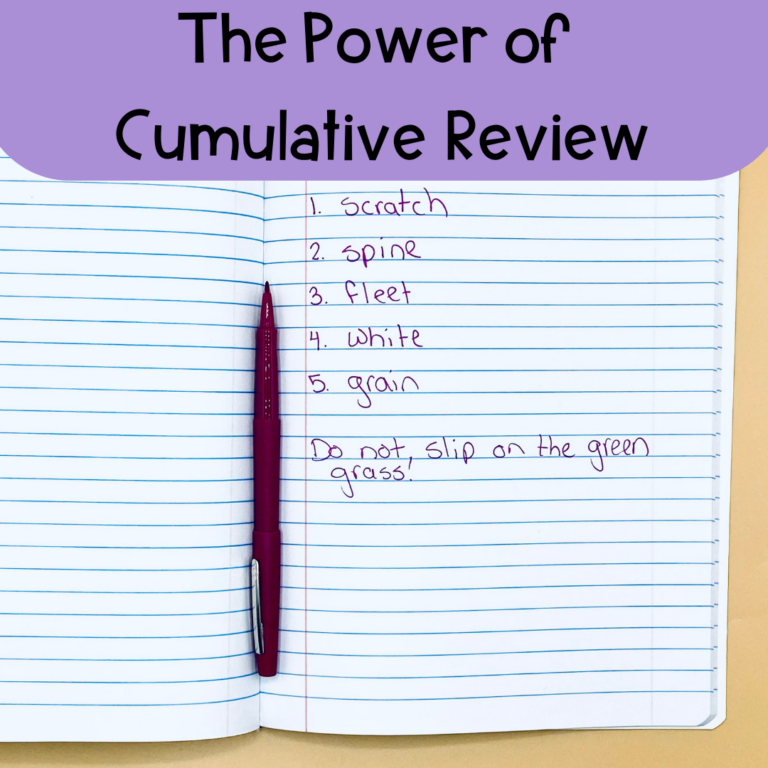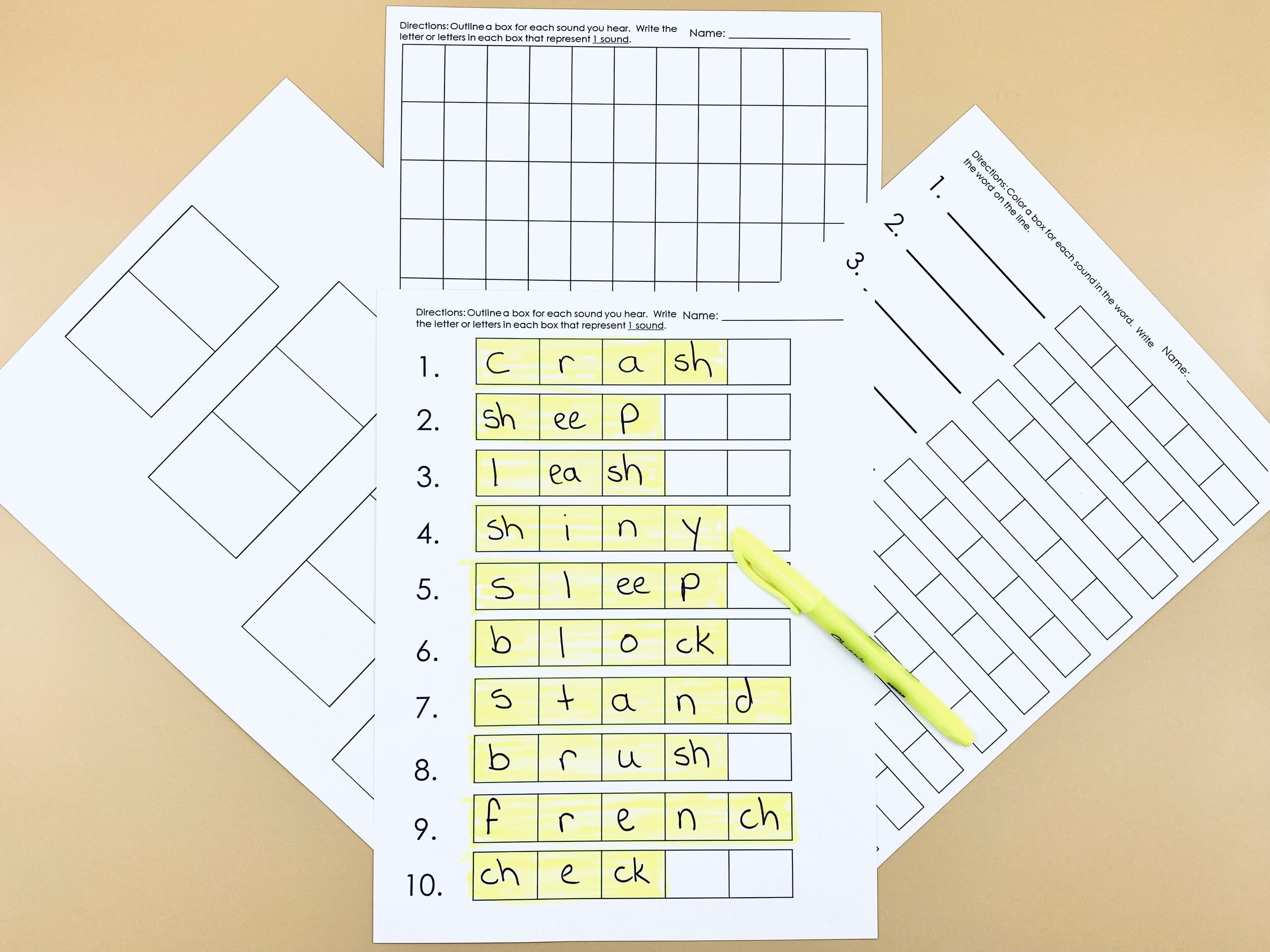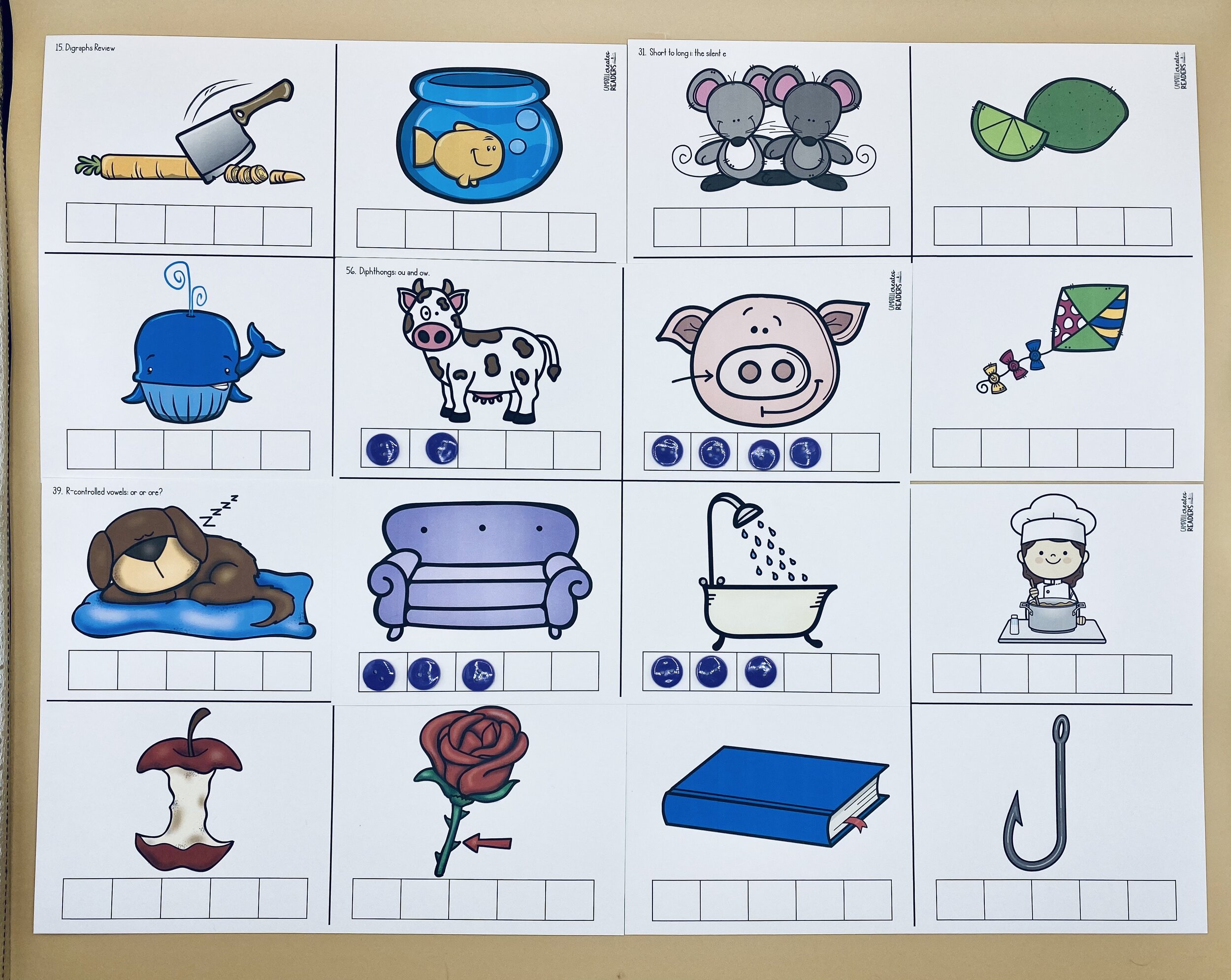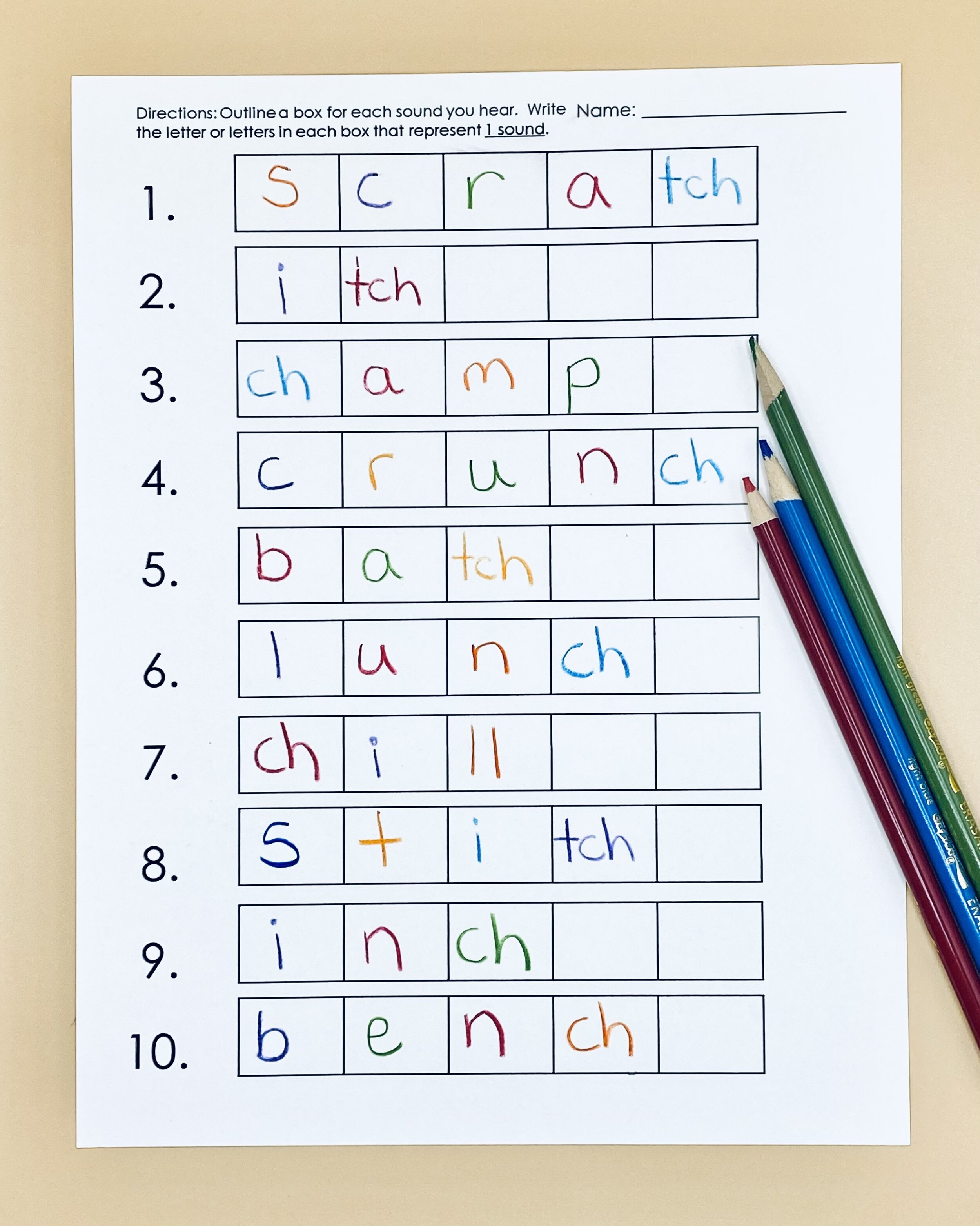
Share This:
In my last post, we discussed orthographic mapping and why it is crucial for reading success. Theory is great, but what every teacher wants to know is this—how does it look in practice? In it’s simplest terms, we want to use activities that will help students focus on matching sound to print. Today, I want to talk about a variety of activities that you can use to promote orthographic mapping.
Without phonemic awareness, orthographic mapping isn’t possible. Children must be able to sequence and manipulate words at the phoneme level to be successful. You don’t have to have a program. Instead, every day you can practice segmenting, blending, adding, deleting, or substituting. I’ve discussed phonemic awareness at length in other posts, so I won’t belabor it here. But I couldn’t write without highlighting the importance of this skill—you can’t match sounds to print without a knowledge of the sounds.
How should you do it? Use the words you are using for your word study! Before introducing a new phonics skill, practice phonemic awareness tasks with the words. For example, if you were about to teach magic e, your students could practice segmenting words with short and long a. Just remember, however, that we need to take our phonemic awareness practices to print! After you have practiced your phonemic awareness tasks, make sure you are bridging those sounds to the graphemes that match those phonemes! I’ve moved the phonemic awareness portion of my lesson to right before I introduce a phonics rule, exactly for this reason.

Sound-symbol mapping is a fantastic procedure to use for practicing new phonic rules or reviewing previous ones. The purpose of sound-symbol mapping is to assist students in matching phonemes to the graphemes that represent those sounds (sounds familiar, right? Are you tired of hearing me say that we need to match sounds to print?)
Here’s the procedure:
1. Say a word. Have students repeat the word.
2. Tap the sounds.
3. Outline/color in the same number of boxes as sounds. (3 sounds = 3 boxes).
4. Fill in the letter(s) that represent those sounds. There may be more than 1 letter that represents a sound. For example, the word crash has 5 letters, but only 4 sounds. The sh goes in one box because it represents a single sound.
Time and time again, I hear teacher say how powerful this strategy has been for them. If you want to see this in action, check out my Facebook live on orthographic mapping. I start utilizing this technique around the 14:30 minute mark.

Before I introduce a new phonics rule, I use elkonin boxes to get students thinking about the sounds. For example, if I am teaching students ou and ow, I give them several pictures, like the ones on the right (cow, snout, couch, shower).
Before I even discuss the graphemes, we talk about the sounds. We use chips or buttons to represent each sound. After tapping sounds, I say something like “Where was the /ow/ sound in cow? snout? couch? shower?” Then I make the explicit connection between sounds and symbols. “When we hear the /ow/ sound in the middle, we use an ou. When we hear the /ow/ sound at the end of a syllable or word, we use the ow.” I always try to make explicit the connection between phonemes and graphemes.

When I was in the classroom, one of my favorite activities was rainbow words, where children write each word in a different colored marker or crayon. It’s a fun activity, and one that is literally zero prep for the teacher. But I’m no longer convinced it is an effective strategy for word study. Ask yourself this—is it possible for the child to do this activity without being able to read or spell the word? If so, then we may need to rethink it.
One way we can focus on making the sound-symbol connection is by having children use a different color for every sound, NOT every letter. Take a look at the picture. If a child writes itch in 4 different colors, does it tell you anything about their spelling knowledge? If a child writes i-tch with two colors, that tells you that they have been paying attention to the sounds. Shoutout to Decodable Readers Australia, where I first heard about this technique!
Giving children flashcards with high-frequency words and expecting them to somehow remember those words is not an efficient strategy. There’s an idea floating around in the teaching world that sight words are words we “just have to memorize because you can’t sound them out.” In fact, after I left college I thought sounding it out was an ineffective strategy for most words. Instead, I thought we should using the cueing strategies to promote word recognition. I cringe when I reflect on how I used to tell parents that children should be using the text clues, not phonics clues, to read the words.
The truth is, however, that we CAN sound out sight words. We just have to draw attention to the sounds that DO work before we talk about the ones that don’t play fair. I have an entire blog post dedicated to this topic. At the bottom, I’ll list some great free resources to help you get started!
I know what you’re thinking. When am I supposed to do these activities? The great thing is this—all of these activities can be done whole-group or small group. Most of these activities don’t require a lot of time each day. What many of them do require, however, is consistency and persistency. You do not need to do all of these every day, but every day your children should have time devoted to matching sounds to print. We will never have the level of automatic word recognition we want without a great deal of practice.
You Tube video on orthographic mapping.
Heart Word Magic from Really Great Reading.
University of Florida Literacy Institute’s Heart Words resources.
Share This:

Savannah Campbell is a K-5 reading specialist. She has taught her entire 12-year teaching career at the school she went to as a child. She holds two master’s degrees in education from the College of William and Mary. Savannah is both Orton-Gillingham and LETRS trained. Her greatest hope in life is to allow all children to live the life they want by helping them to become literate individuals.

Savannah Campbell is a K-5 reading specialist. She has taught her entire 12-year teaching career at the school she went to as a child. She holds two master’s degrees in education from the College of William and Mary. Savannah is both Orton-Gillingham and LETRS trained. Her greatest hope in life is to allow all children to live the life they want by helping them to become literate individuals.
Feeling overwhelmed with all the terminology out there? Want to know the key terms all teachers need to teach phonics? In this FREE Rules of English cheat sheet, you get a 5 page pdf that takes you through the most important terms for understanding English—you’ll learn about digraphs, blends, syllable types, syllable divisions, and move. Grab today and take the stress out of your phonics prep!
